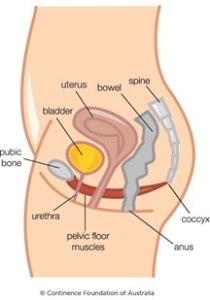Leaking is incredibly common!
Are you a runner? Did you know that 1 in 3 women suffer with pelvic floor issues and most don’t seek help. Leaking is incredibly common! It is advised to see a pelvic physiotherapist for help with your pelvic floor if this is happening. In this article we will cover:
- How your pelvic floor helps you as you run
- Why you may be leaking
- How you can alter your running gait to take pressure off your pelvic floor
What is the pelvic floor?
The pelvic floor is a group of muscles that runs from the front of your pelvis (your pubic bone), all the way to the back (your coccyx bone). It is integral to sexual function, continence and supporting pelvic organs against gravity. This often means that if it’s not functioning well, it can be extremely upsetting for that person.
Did you know that 1 in 3 women suffer with pelvic floor issues
How is the pelvic floor helpful when running?
When we run, we are essentially hopping from one foot to another, which requires load transfer from one side to another, for which we use our abdominal muscles. Our pelvic floor serves as a protection against gravity as you land, so your pelvic organs stay where they should! For this protection to work best, the pelvic floor needs to move up and down along with gravity. To do this, it should be able to contract AND relax well.
If the pelvic floor is able to fluctuate, then the diaphragm (the muscle used for breathing), abdominal wall and pelvic floor can work together well, and you are much less likely to experience pelvic floor issues on exercise.
Why am I leaking when I run?
It could be that your pelvic floor is too tight (hypertonic), and not allowing enough fluctuation as you bounce. It’s also possible that your pelvic floor isn’t strong enough to combat the downward force as you run. This could be due to pregnancy, childbirth, genetics, muscle strength imbalance, stress or anxiety.
If you’re unsure which category you fall in, please see a pelvic physio so they can guide you.
While you are rehabilitating your pelvic floor, there are a couple of tips you can use to minimise leaking as you run:
- Ensure a good mid foot strike.
- Avoid striking with your heel which can cause a stopping motion.
- Imagine pushing off with your back foot instead of pulling with your front leg.
- Lean slightly forward as you run.
- Decrease stride length.
Running analysis and pelvic floor assessment is available at the Physio Clinic Bristol. Book online now via https://thephysioclinic.connect.tm3app.com/




